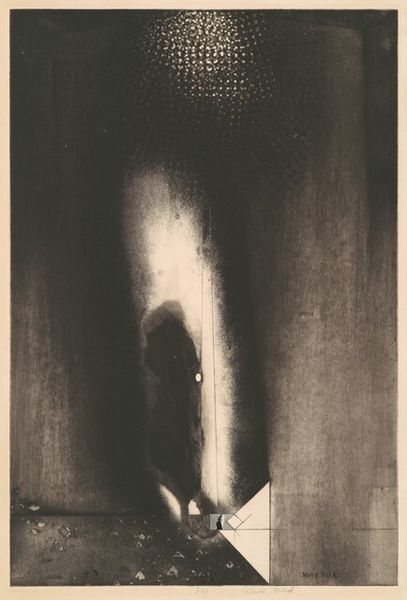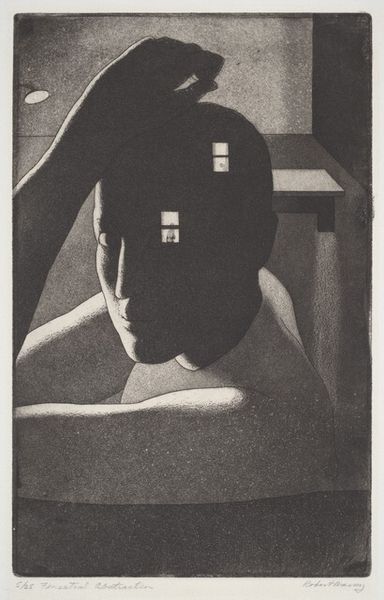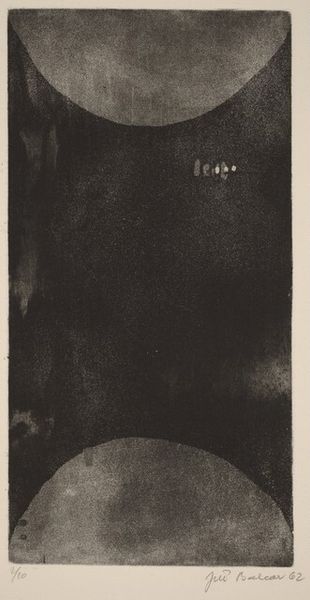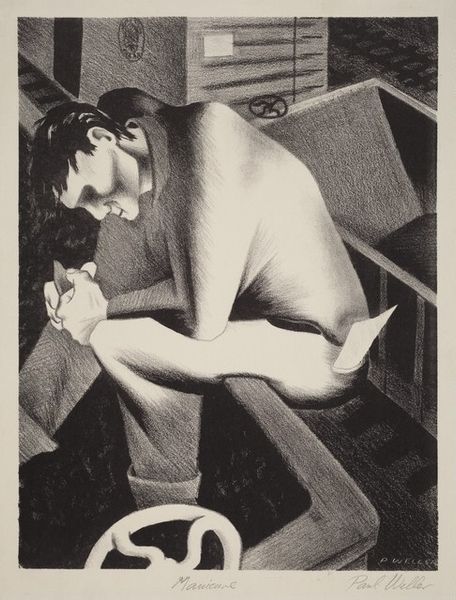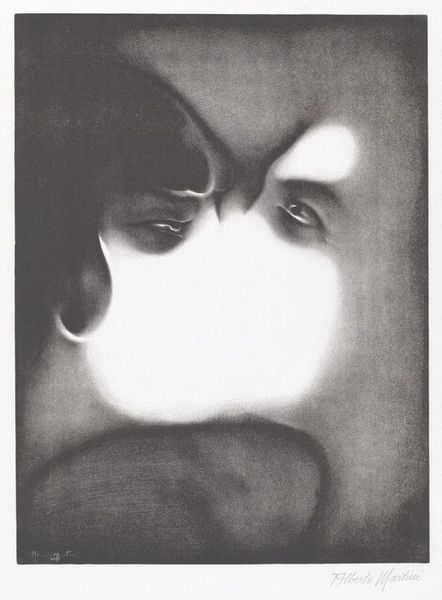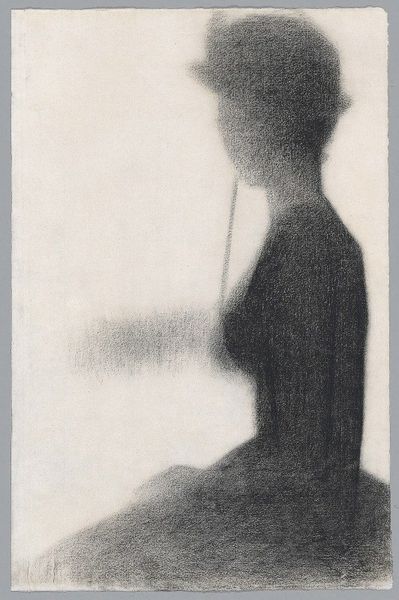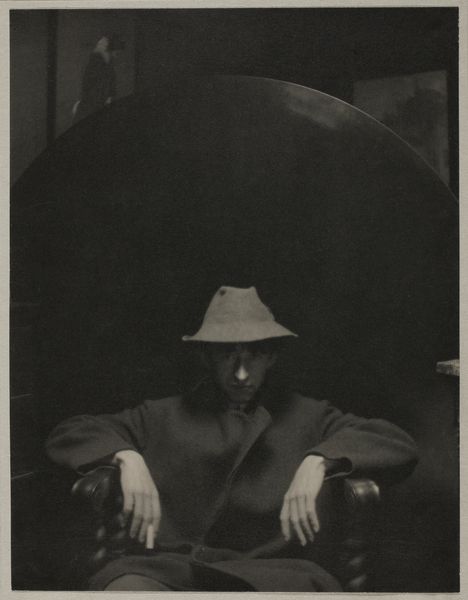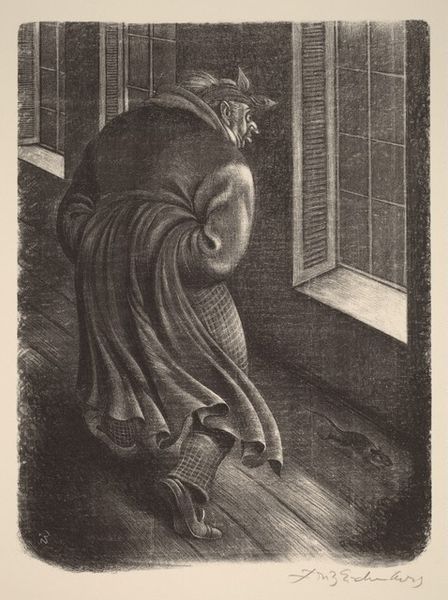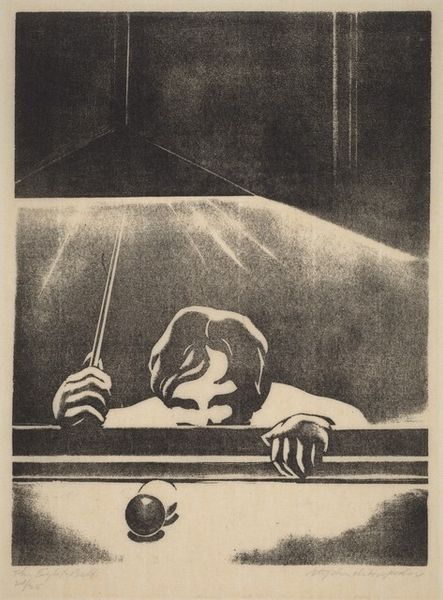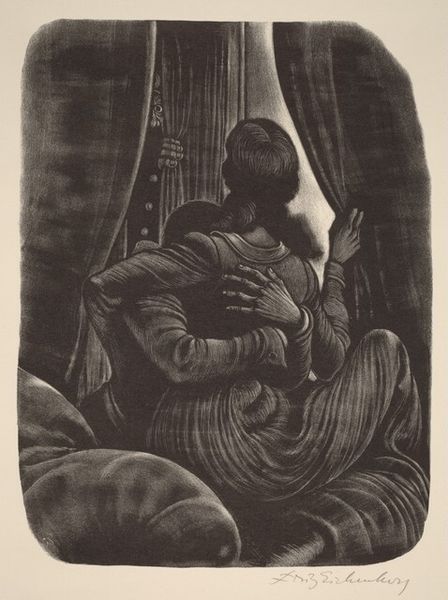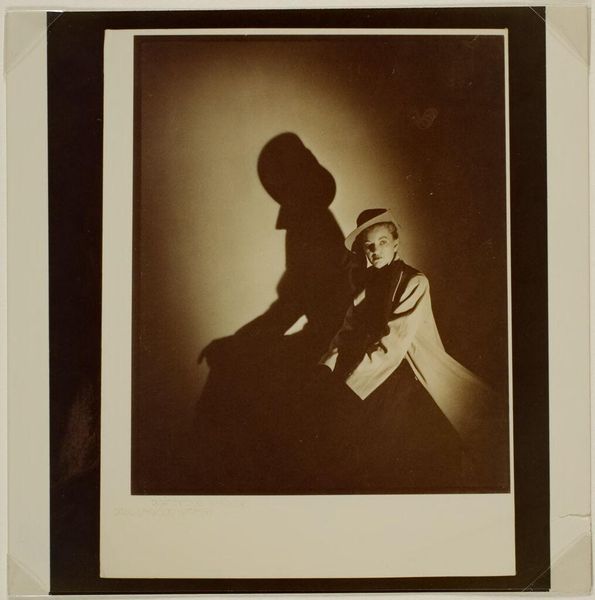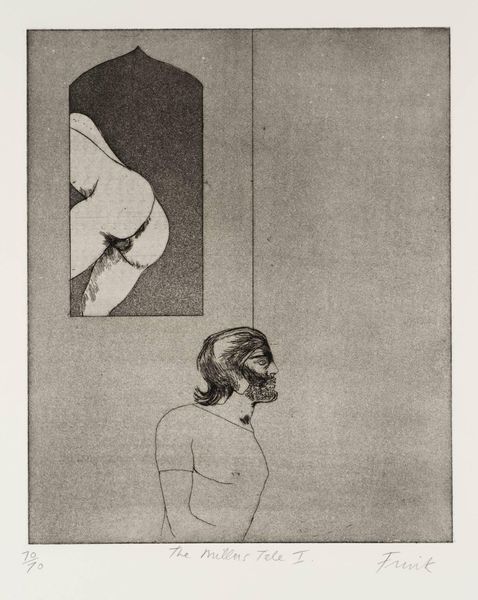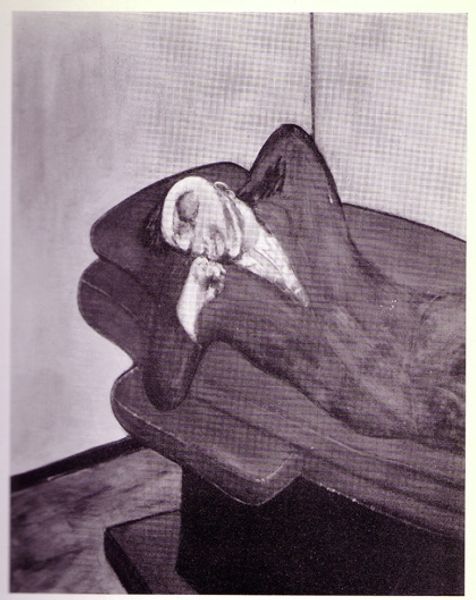
tempera, print, graphite
#
portrait
#
portrait image
#
tempera
# print
#
caricature
#
figuration
#
graphite
#
modernism
#
realism
#
monochrome
Dimensions: Image: 215 x 192 mm Sheet: 426 x 318 mm
Copyright: National Gallery of Art: CC0 1.0
Editor: Here we have Stevan Dohanos' "Mourner," created around 1932. It seems to be a print, maybe tempera or graphite on paper? The stark monochrome and the figure's bowed head really evoke a sense of grief and introspection. What strikes you most about this image? Curator: The bowed head, precisely. It’s an age-old symbol, isn't it? Of submission, certainly, but more deeply, of bearing a burden. This isn’t just sadness; the composition channels something elemental, almost archetypal. Notice the figure’s attire – dark, unadorned. Does it remind you of any particular period or societal role? Editor: It's somber. I'm drawn to the buildings on the horizon. Do you think those hint at the historical period, or maybe some social commentary about the mourner’s position in society? Curator: Exactly! The faceless buildings become stand-ins, don't they, for the unyielding forces of the world? And this figure, turned away from us, almost swallowed by shadow, stands at the intersection of individual grief and societal weight. Consider the emotional power embedded in simple visual constructs, that black armband, the sharp tonal contrasts suggesting grief is the heavy burden this man must bear. Editor: So it’s not just personal mourning, but something larger? The Great Depression was going on then... Curator: Precisely. Dohanos captures a moment, but imbues it with resonant symbolism. Think about how that visual vocabulary – shadow, downturned gaze, looming structures – shapes and perpetuates our understanding of collective trauma across generations. Editor: That’s fascinating. I never thought about how a single image could carry so much historical and cultural weight. Curator: Images speak. The goal is learning how to listen and appreciate how cultural memory continues to shape visual understanding of symbolism and the imagery, and how we, in turn, continue to perceive these visual artifacts. Editor: Thank you, this has given me a totally new perspective. Curator: My pleasure. Every viewing reveals a little more, doesn't it?
Comments
No comments
Be the first to comment and join the conversation on the ultimate creative platform.

